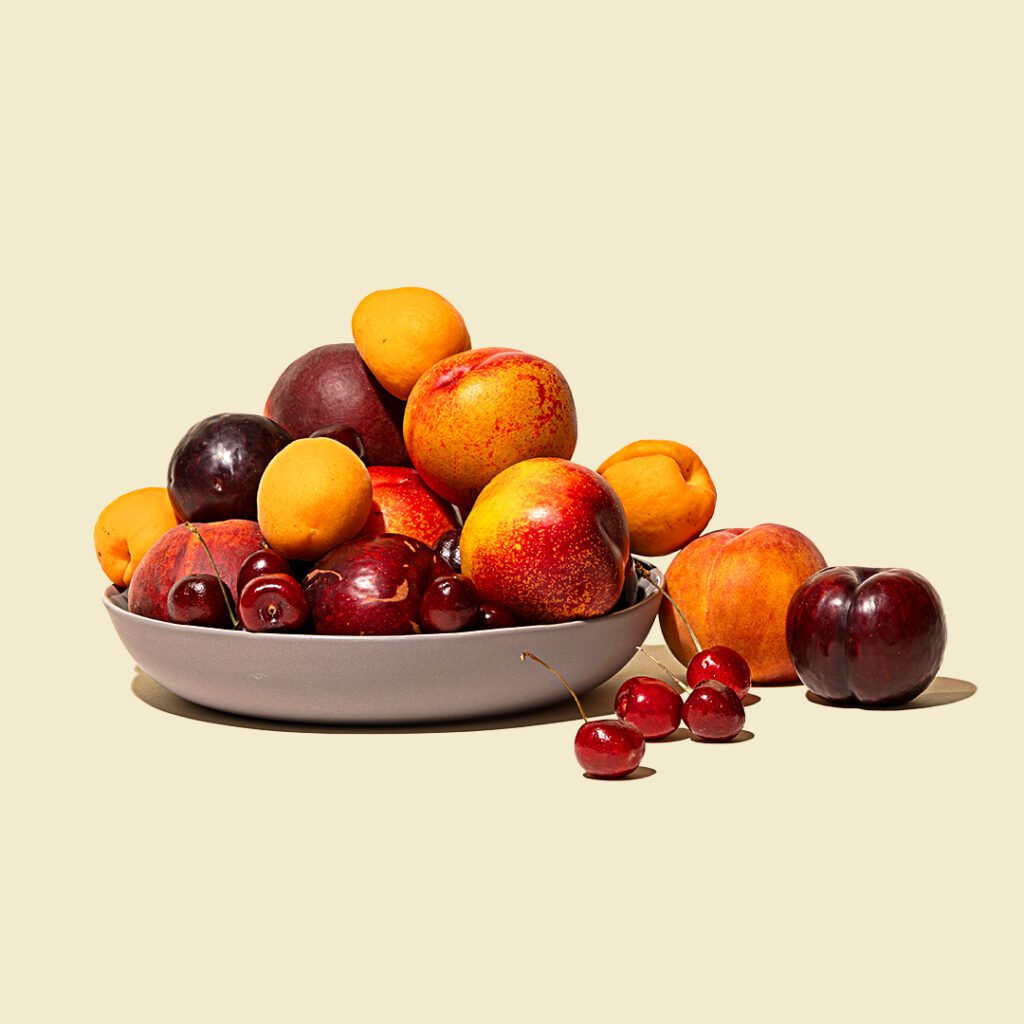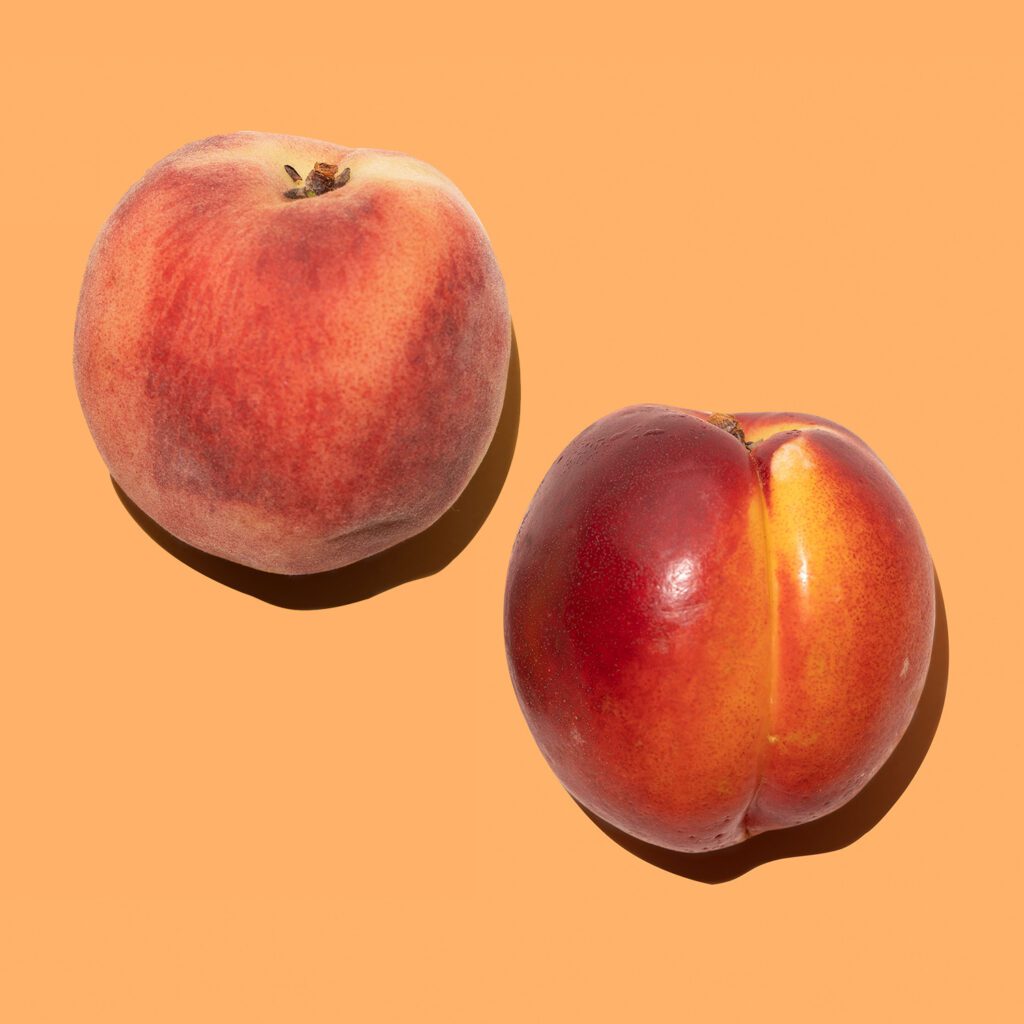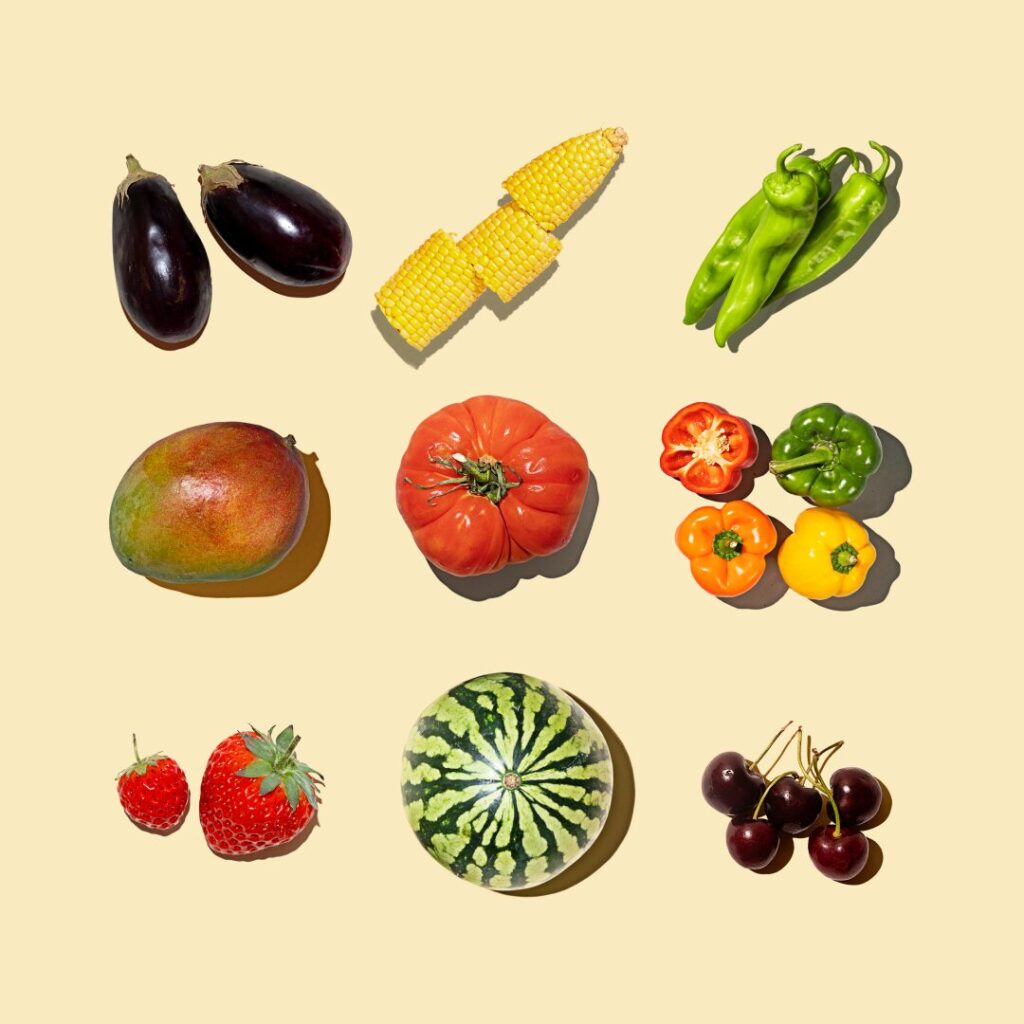
You might’ve heard the term “hybrid fruit” and thought: Wait, is that natural? Is it organic? Is it GMO? Is it made in a lab by a mad scientist in a fruit coat? Spoiler: It’s not. Breeding hybrids is more normal than you might know, and we appreciate that our farmers’ creativity has resulted in many of our favorite fruits.

Hybrid fruits are nothing new; humans have been cross-breeding plants for thousands of years to create the best-tasting, best-growing, best-looking fruits around. These delicious fruit hybrids come from good old-fashioned plant breeding (not genetic modification), and at Misfits Market, we love celebrating the wildly wonderful results.
In fact, some of the juiciest, most snackable summer produce in our assortment is hybrid fruit—and you might already be buying it without even realizing.
So, What Is a Hybrid Fruit?
A hybrid fruit is created when two different fruit varieties (usually within the same species or family) are naturally cross-pollinated to produce a new variety. Think of it as nature’s matchmaking, with a little help from farmers who know their stuff.
Unlike GMOs, which involve lab-based gene editing, hybrid fruits are bred through controlled pollination. It’s how we’ve gotten things like seedless grapes, tangy-sweet pluots, and even your everyday grocery store apple.
Key takeaway: Fruit hybrids are natural, safe, and grown with traditional farming methods, not genetic engineering.
Hybrid Fruits You’ll Find at Misfits Market
Here are a few of our favorites, some you’ve likely heard of, others that might surprise you:
| Hybrid Fruit | Parent Fruits | Flavor Profile | Best Way to Enjoy |
| Plumcot | 50% plum, 50% apricot | Balanced, juicy | Fresh snacking |
| Pluot | Plum + apricot | Sweet, candy-like | Fresh, in salads |
| Aprium | Mostly apricot + plum | Soft, floral | Desserts, jams |
| Nectaplum | Nectarine + plum | Sweet-tart | Eaten fresh, cobblers |
| Tangelo | Tangerine + pomelo | Juicy, citrusy | Peel-and-eat, cocktails |
| Pineberry | Strawberry variant | Pineapple-like flavor | Yogurt bowls, baking |
| Mandarinquat | Mandarin + kumquat | Sweet-tart, edible peel | Snacking, citrus salads |
This is just a starter hybrid fruits list; new varieties of hybrid foods are constantly being developed!
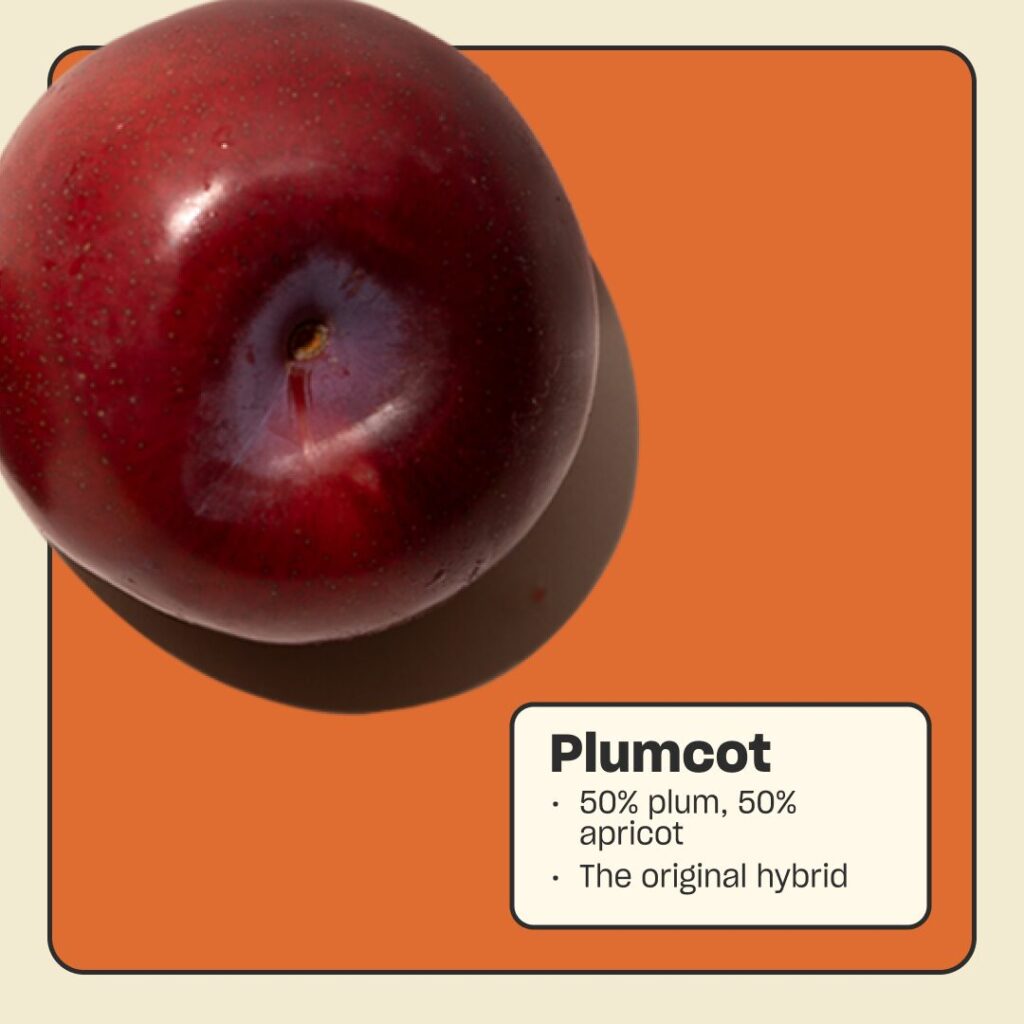
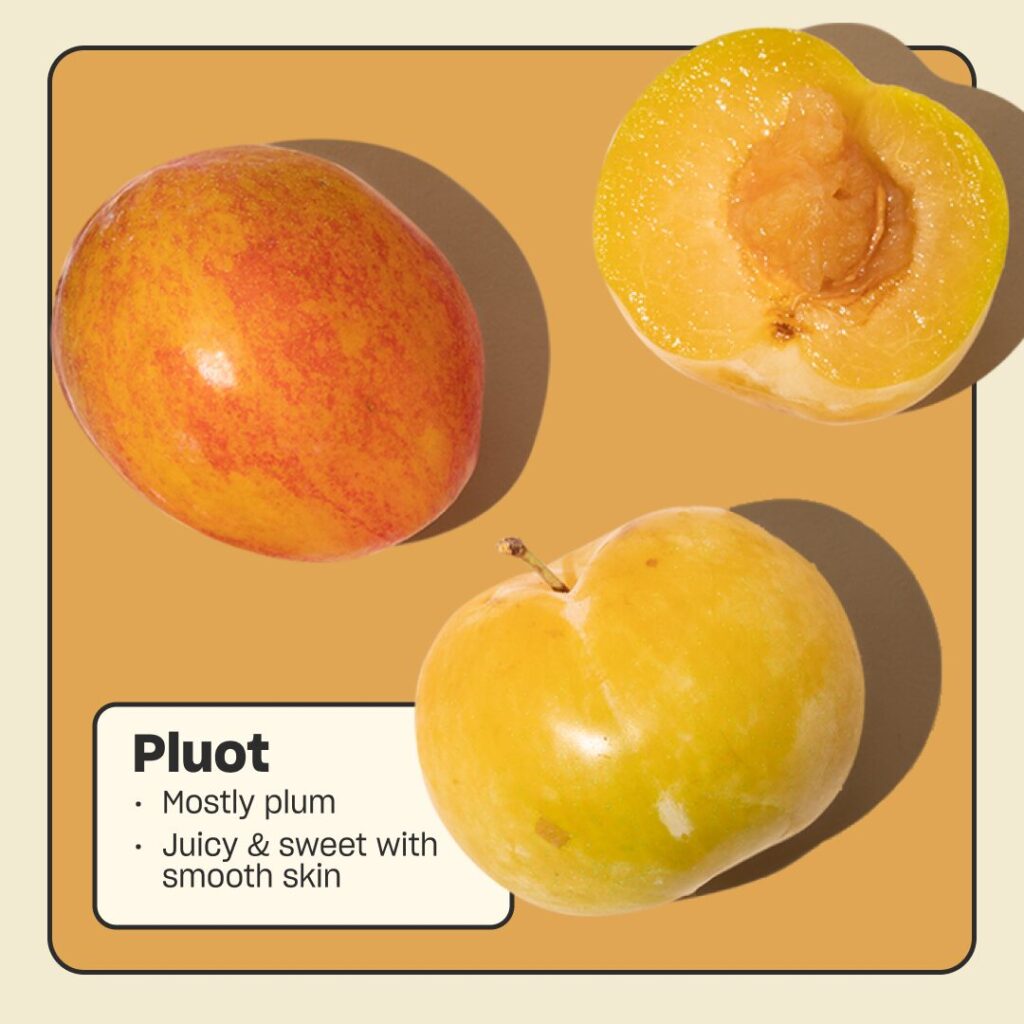
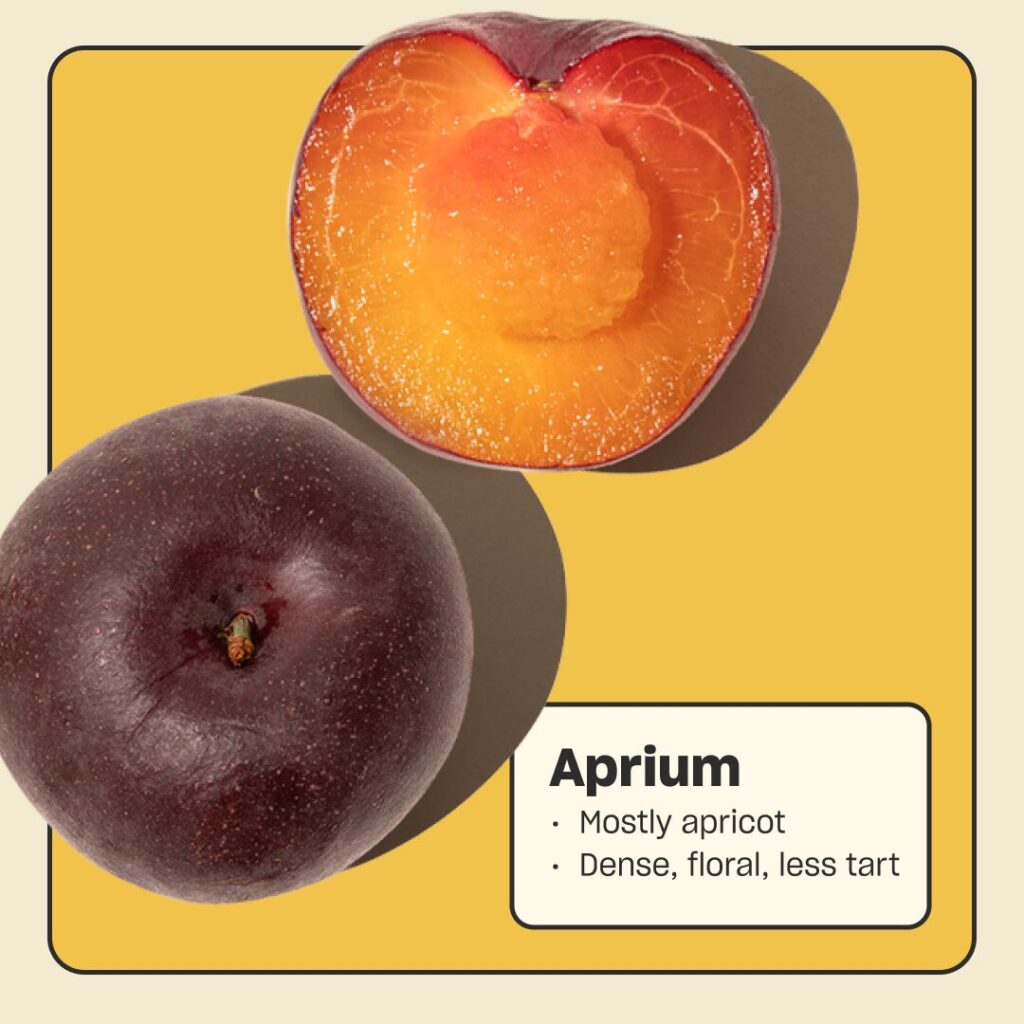
Plumcot
The OG hybrid: 50% plum, 50% apricot. Perfectly balanced, smooth-skinned, and juicy.
Pluot
A sweeter, more plum-forward descendant of the plumcot. Known for its vibrant colors and candy-like flavor.
Aprium
The opposite of a pluot, more apricot than plum. Expect soft flesh, floral notes, and serious snackability.
Nectaplum
Peach meets plum meets nectarous magic. Sweet, tangy, and best enjoyed standing over the sink.
Tangelo
A tangerine + pomelo or grapefruit mashup. Juicy, easy to peel, and loaded with vitamin C.
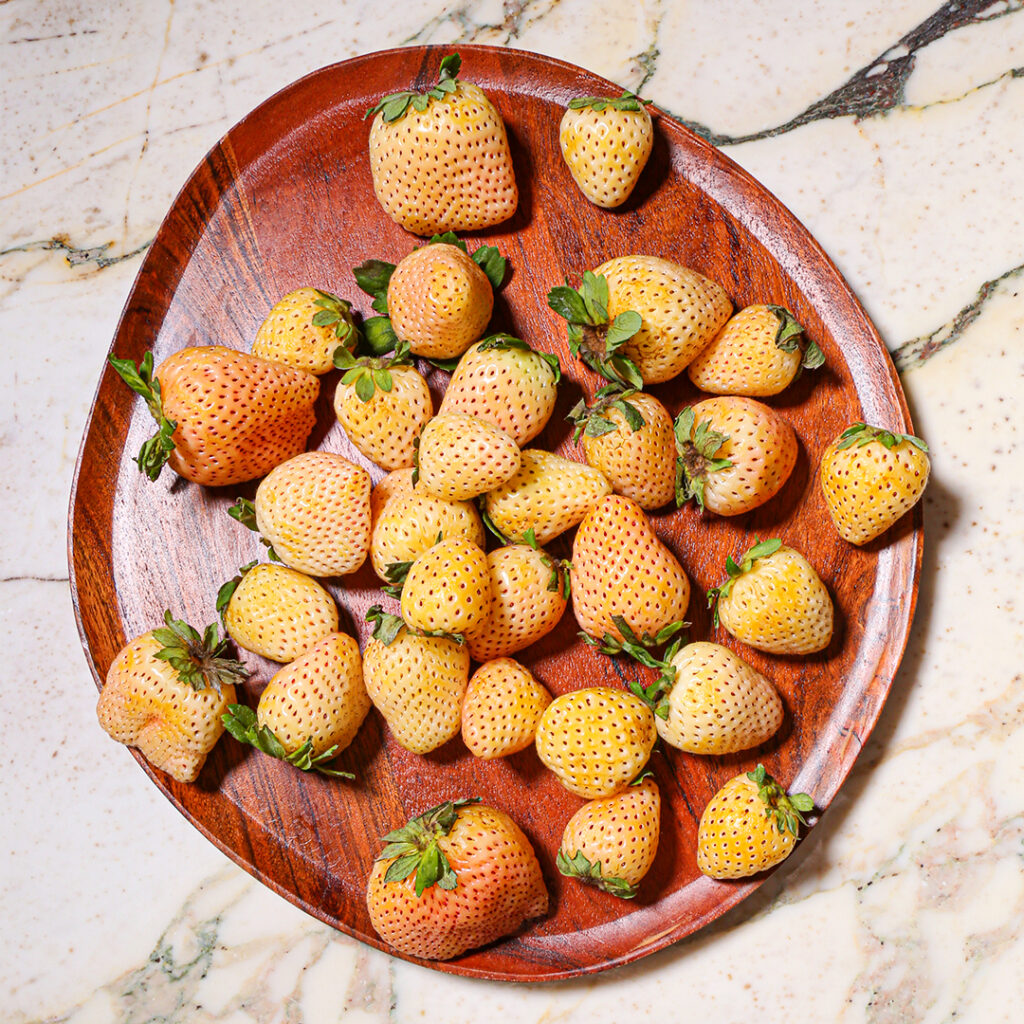

Pineberry
Looks like a strawberry in reverse (white with red seeds), tastes like a mix between pineapple and berry. Very fun.
Mandarinquat
This tangerine + kumquat hybrid is tart, sweet, and edible peel included! A citrus lover’s dream.
Keep reading: What Does Organic Food Really Mean? A Guide to Organic Produce, Farming, and Food
Why Hybrid Fruits Deserve a Spot in Your Cart
Hybrid fruits aren’t just tasty; they come with some powerful benefits:
- Flavor First: Hybrid fruits are often bred to be juicier, sweeter, or more aromatic than their parent fruits.
- Better Texture: Think crispier apples, smoother plums, or melt-in-your-mouth peaches.
- Naturally Grown: Hybrid doesn’t mean artificial; it just means thoughtfully cultivated.
- Less Waste: Some hybrids are designed to resist bruising or spoilage, meaning they last longer and waste less.
- Nutrient Variety: Certain hybrid foods deliver the best of both parent fruits in vitamins and antioxidants.
How to Enjoy Hybrid Fruits at Home
Looking to get creative with hybrid fruits? Try these ideas:
- Snack on pluots or apriums straight from the fridge.
- Toss tangelos into fresh salads or squeeze them for juice.
- Add pineberries to yogurt bowls (a snack naturally rich in protein), smoothies, or desserts.
- Bake cobblers, crisps, or pies with nectaplums for a flavor twist.
- Try mandarinquats sliced into cocktails or citrusy marinades.
Bonus points if you can buy them in a way that reduces food waste. Good news: Misfits Market can help you do just that. By partnering with amazing farmers to source produce like these hybrids that are too big, too small, or just a smidge scarred, we’re saving 500K lbs of food every week. Learn more and start shopping here.
The Takeaway
Hybrid fruits aren’t some futuristic food experiment, they’re just a tasty evolution of the fruit we already know and love. The next time you’re shopping at Misfits Market and see something like a pluot or pineberry, give it a go. You might just discover a new favorite.
We love introducing people to new fruits and flavors. Here’s a quick guide on how to enjoy your hybrid fruit at peak ripeness. If you do end up trying something new, let us know!
Ready to taste these unique hybrid fruits?
Skip the grocery store and get fresh, seasonal fruit hybrids delivered right to your door.
FAQs About Hybrid Fruits
- Do hybrid fruits have nutritional value?
Yes. Hybridization doesn’t remove nutrients; hybrid fruits have comparable vitamins, minerals, and fiber to their parent varieties; exact levels vary by cultivar.
- Is an orange a hybrid fruit?
Yes. The sweet orange (Citrus × sinensis) is a natural hybrid of pomelo and mandarin.
- Are hybrid tomatoes good or bad?
Neither. They’re simply crosses of two tomato varieties, safe to eat, often bred for disease resistance, yield, or consistency; not the same as GMOs.
- Is an apple a hybrid fruit?
Often. Most modern apple varieties (e.g., Gala, Fuji, Honeycrisp) are hybrids created by crossing existing apple cultivars, though “apple” itself is a species with many cultivars.
- Are hybrid fruits and vegetables good or bad?
They’re fine! They’re produced through cross-pollination, carry no unique health risks, and can offer benefits like better flavor, texture, or shelf life.
Want to learn more about the funky, flavorful fruit we carry? Keep exploring:
